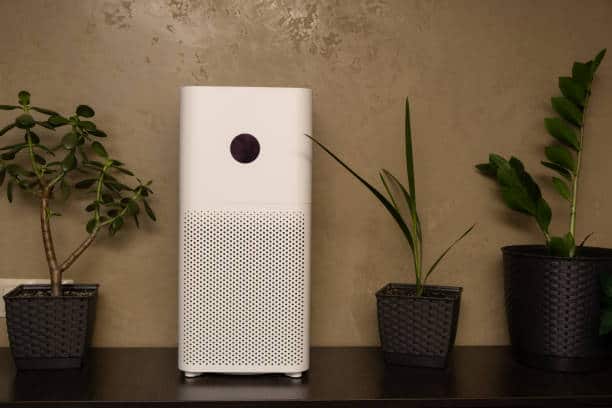In recent years, there has been growing awareness about the importance of indoor air quality (IAQ) and its impact on health and well-being.
As a result, indoor air quality monitors have gained popularity as tools for measuring and monitoring IAQ levels in homes, offices, schools, and other indoor environments.
However, questions often arise regarding the accuracy of these monitors and whether they are worth the investment.
In this article, we’ll dive into the accuracy of indoor air quality monitors and their nuts and bolts to help you make informed decisions about their utility and value.
Indoor Air Quality Monitors:
Indoor air quality monitors are electronic devices designed to measure and track various parameters that affect indoor air quality, including particulate matter (PM), volatile organic compounds (VOCs), carbon dioxide (CO2), carbon monoxide (CO), humidity, and temperature.
These monitors use sensors and detectors to analyze air samples and provide real-time or continuous data on IAQ parameters.
to analyze air samples and provide real-time or continuous data on IAQ parameters.
While indoor air quality monitors vary in features, accuracy, and price, they generally serve as valuable tools for assessing indoor environmental conditions and identifying potential sources of indoor air pollution.
Are indoor air quality monitors accurate?
When compared to professional IAQ testing equipment, portable IAQ monitors are reasonably accurate. Gas pollutants like CO2 and CO typically have an accuracy of ±50 ppm and ±5 ppm, respectively. Radon measurements are accurate within ±20%, while temperature and humidity readings have an accuracy of ±5%.
The accuracy of indoor air quality monitors varies depending on factors such as sensor technology, calibration, environmental conditions, and the presence of interfering substances.
While some monitors offer high accuracy and reliability, others may be less precise. It’s essential to research and select a monitor that meets your specific IAQ monitoring needs and requirement
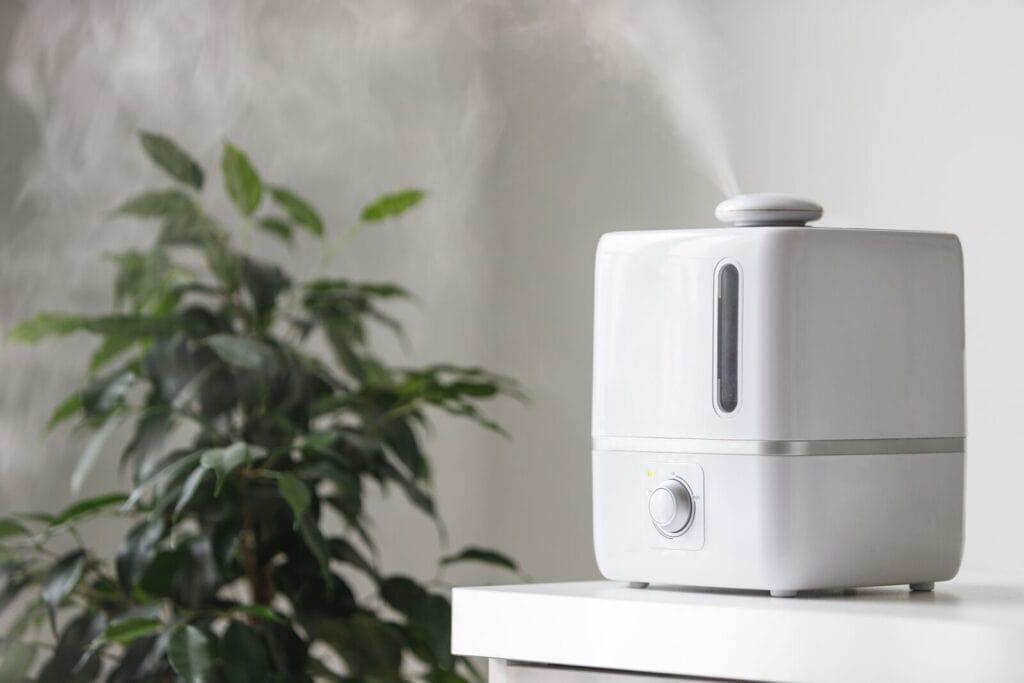
Accuracy of Indoor Air Quality Monitors:
One of the primary concerns regarding indoor air quality monitors is their accuracy in measuring IAQ parameters. I have tested the accuracy of a couple of IAQ monitors with respect to professional air quality tests, and I have compiled that data in a table for your reference.
| Pollutant | Accuracy |
|---|---|
| Carbon Dioxide | ±50 ppm |
| Carbon Monoxide | ±5 ppm |
| Particulate Matter | ±10% |
| Ozone | ±10 ppb |
| Formaldehyde | ±10 µg/m³ |
| Radon | ±20% |
| VOCs | ±20% |
| Temperature | ±2°C |
| Humidity | ±5% RH |
Also, many Scientific studies and evaluations have assessed the accuracy of indoor air quality monitors across different brands and models, revealing varying levels of precision and reliability.
have assessed the accuracy of indoor air quality monitors across different brands and models, revealing varying levels of precision and reliability.
Factors that can influence the accuracy of indoor air quality monitors include sensor technology, calibration, environmental conditions, and the presence of interfering substances in the air.
Sensor Technology in Indoor Air Quality Monitors:
The accuracy and reliability of indoor air quality (IAQ) monitors are heavily influenced by the sensor technologies employed to detect various pollutants.
Here’s a deep dive into different sensor technologies and their implications for IAQ monitoring:
Particulate Matter Sensors:
Optical sensors are commonly used to measure particulate matter (PM) concentrations in indoor air. These sensors work by detecting light scattering or absorption caused by particles suspended in the air.
are commonly used to measure particulate matter (PM) concentrations in indoor air. These sensors work by detecting light scattering or absorption caused by particles suspended in the air.
Optical PM sensors offer high sensitivity and accuracy in detecting fine particles, such as PM2.5 and PM10, which are associated with respiratory health risks.
Volatile Organic Compound (VOC) Sensors:
Metal oxide semiconductor (MOS) sensors are often utilized for detecting VOCs in indoor environments. MOS sensors operate by detecting changes in electrical conductivity when VOCs interact with the sensor surface.
While MOS sensors provide real-time monitoring of VOC levels, they may exhibit cross-sensitivity to other gases and require periodic calibration to maintain accuracy.
Carbon Dioxide (CO2) and Carbon Monoxide (CO) Sensors:
Infrared sensors are commonly employed for measuring CO2 and CO concentrations in indoor air.
These sensors work by detecting the absorption of infrared radiation by CO2 or CO molecules, providing accurate measurements of gas concentrations.
These sensors offer high precision and reliability in detecting CO2 and CO levels, making them essential for assessing indoor air quality and ensuring occupant safety.
and ensuring occupant safety.
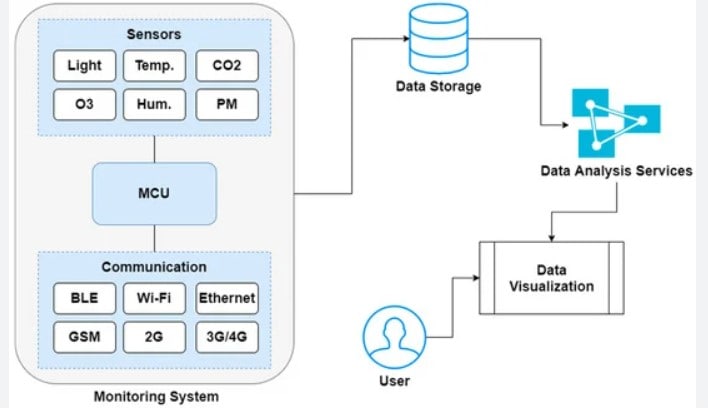
Humidity and Temperature Sensors:
Capacitive humidity sensors and thermistors are widely used for measuring humidity and temperature levels in indoor environments.
are widely used for measuring humidity and temperature levels in indoor environments.
Capacitive humidity sensors detect changes in electrical capacitance caused by water vapor adsorption, providing accurate humidity measurements.
Thermistors measure changes in electrical resistance with temperature variations, offering precise temperature readings for IAQ monitoring.
Challenges and Considerations:
While sensor technology has advanced significantly, some sensors may be prone to drift, calibration drift, or cross-sensitivity to other gases.
External factors such as temperature, humidity, and air flow can influence sensor performance and lead to inaccuracies in measurements.
such as temperature, humidity, and air flow can influence sensor performance and lead to inaccuracies in measurements.
Regular sensor calibration, maintenance, and quality assurance protocols are essential for ensuring the accuracy and reliability of IAQ monitoring systems.
Calibration of Indoor Air Quality Monitors:
Calibration is a critical process for maintaining the accuracy and reliability of indoor air quality (IAQ) monitors. Here’s an insight into calibration procedures and their importance in maintaining precise IAQ measurements:
Purpose of Calibration:
Calibration involves adjusting and verifying the performance of sensors to ensure accurate and consistent readings of IAQ parameters.
Over time, sensor drift, ageing, and environmental factors can affect the accuracy of IAQ monitors, necessitating periodic calibration to maintain reliable measurements.
Calibration Procedures:
Calibration procedures typically involve comparing sensor readings to reference standards or known concentrations of target gases in controlled laboratory conditions.
to reference standards or known concentrations of target gases in controlled laboratory conditions.
During calibration, adjustments are made to sensor output signals to align them with reference values, ensuring accurate measurement across the sensor’s operating range.
Calibration may include adjustments for zero offset (baseline), sensitivity, linearity, and temperature dependence to correct for sensor drift and variability.
Frequency of Calibration:
The frequency of calibration depends on various factors, including sensor type, environmental conditions, manufacturer recommendations, and regulatory requirements.
Some IAQ monitors may require periodic calibration at regular intervals (e.g., annually or biannually) to maintain accuracy, while others may feature self-calibration capabilities or require less frequent calibration.
Manufacturer Instructions and Services:
Manufacturers often provide calibration instructions, guidelines, or services for their IAQ monitors to ensure optimal performance.
Calibration procedures may vary depending on the monitor model, sensor technology, and specific IAQ parameters being measured.
Manufacturers may offer calibration kits, reference gases, or calibration services to facilitate the accurate calibration of IAQ monitors by trained professionals.
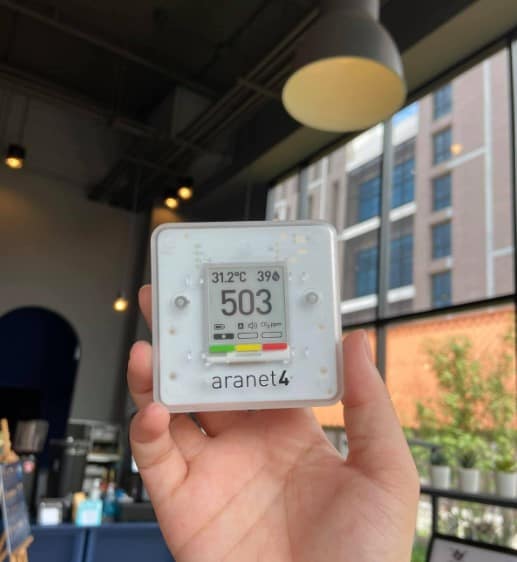
Quality Assurance and Compliance:
Calibration plays a crucial role in quality assurance and compliance with regulatory standards and guidelines for IAQ monitoring.
Regular calibration ensures that IAQ monitors meet performance specifications and provide reliable data for assessing indoor air quality and mitigating health risks.
User Responsibilities:
In most cases, we are responsible for following manufacturer recommendations and guidelines for calibration, including scheduling regular calibrations, performing calibration checks, and documenting calibration results.
Proper storage, handling, and maintenance of IAQ monitors are also essential for preserving sensor accuracy and prolonging monitor lifespan.
Environmental Conditions and Indoor Air Quality Monitoring:
Environmental conditions play a significant role in the accuracy and reliability of indoor air quality (IAQ) monitoring.
Understanding the impact of environmental factor s on sensor performance is crucial for obtaining accurate IAQ measurements.
s on sensor performance is crucial for obtaining accurate IAQ measurements.
Temperature:
Temperature variations can affect sensor stability, sensitivity, and response time. Extreme temperatures may cause sensor drift or affect the chemical reactions involved in gas detection.
It’s essential to place IAQ monitors in environments with controlled temperatures to ensure consistent sensor performance and accurate measurements.
Humidity:
High humidity levels can influence sensor response and signal stability, particularly for sensors sensitive to moisture.
Moisture can condense on sensor surfaces, affecting measurements and potentially damaging sensitive components.
IAQ monitors equipped with humidity sensors should be placed in areas with moderate humidity levels to minimize interference and ensure accurate readings.
with moderate humidity levels to minimize interference and ensure accurate readings.
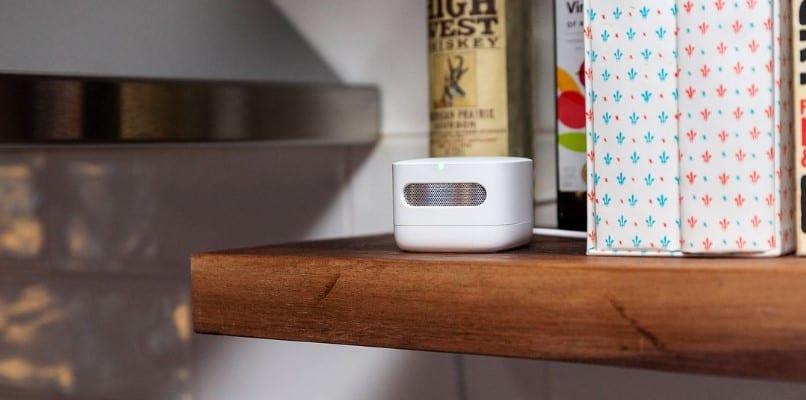
Air Flow:
Airflow patterns within indoor spaces can impact the distribution of pollutants and affect sensor measurements.
Stagnant air may lead to localized pollutant accumulation, while excessive air flow may dilute pollutant concentrations.
Positioning IAQ monitors in areas with representative air flow patterns helps ensure that measurements reflect actual indoor air quality conditions.
Exposure to Contaminants:
Exposure to airborne contaminants, such as chemicals, gases, and particulate matter, can affect sensor performance and accuracy.
Contaminants may adhere to sensor surfaces, interfere with signal transmission, or react with sensor materials, leading to measurement errors.
IAQ monitors should be placed away from sources of contamination, such as exhaust vents, industrial emissions, or chemical storage areas, to minimize interference and maintain measurement integrity.
Sensor Calibration and Compensation:
Some IAQ monitors feature built-in compensation algorithms or temperature/humidity correction functions to account for environmental variations.
Regular sensor calibration and adjustment help maintain accuracy and compensate for changes in environmental conditions.
Users should follow manufacturer recommendations for sensor calibration and conduct periodic checks to ensure optimal performance under varying environmental conditions.
Interfering Substances in Indoor Air Quality Monitoring:
Interfering substances present in indoor air can impact the accuracy and reliability of indoor air quality (IAQ) measurements obtained from IAQ monitors.
Understanding the potential sources of interference and implementing mitigation strategies are essential for ensuring accurate IAQ assessments.
Types of Interfering Substances:
Interfering substances can include volatile organic compounds (VOCs) emitted from cleaning products, cooking fumes, tobacco smoke, and indoor/outdoor pollutants.
Other potential sources of interference may include off-gassing from building materials, furniture, and consumer products, as well as chemical contaminants from nearby industrial activities or vehicular emissions.
Cross-Sensitivity and Interference:
IAQ sensors may exhibit cross-sensitivity to multiple substances, leading to false readings or inaccuracies in sensor responses.
For example, VOC sensors may detect a broad range of organic compounds , making them susceptible to interference from other VOC sources present in the environment.
, making them susceptible to interference from other VOC sources present in the environment.
Similarly, particulate matter sensors may respond to various airborne particles, including dust, pollen, and smoke, potentially leading to cross-sensitivity issues.

Mitigation Strategies:
Manufacturers employ various strategies to mitigate the impact of interfering substances on IAQ monitoring accuracy.
Sensor selectivity: Designing sensors with specific selectivity towards target pollutants can minimize cross-sensitivity and improve measurement accuracy.
Signal processing algorithms: Advanced signal processing techniques can filter out noise and interference, enhancing the signal-to-noise ratio and improving measurement precision.
Data validation techniques: Implementing data validation algorithms enables IAQ monitors to identify and discard erroneous readings caused by interference or sensor drift, ensuring the integrity of measurement data.
Sensor calibration and validation: Regular sensor calibration and validation against reference standards help maintain accuracy and reliability, allowing IAQ monitors to adapt to changing environmental conditions and mitigate the effects of interference.
Scientific Research on Indoor Air Quality Monitors:
Numerous scientific studies and evaluations have been conducted to assess the accuracy and performance
and evaluations have been conducted to assess the accuracy and performance of indoor air quality monitors.
of indoor air quality monitors.
These studies often compare the measurements obtained from indoor air quality monitors with reference instruments or standardized methods to evaluate their reliability and consistency.
While some studies have reported satisfactory agreement between indoor air quality monitors and reference measurements, others have identified discrepancies and limitations that may affect the reliability of IAQ data.
Value and Utility of Indoor Air Quality Monitors:
Despite potential limitations in accuracy, indoor air quality monitors still offer value and utility in assessing indoor environmental conditions and promoting awareness of IAQ issues.
These monitors empower users to monitor IAQ levels in real time, identify trends or fluctuations in pollutant concentrations, and take proactive measures to improve indoor air quality.
Additionally, indoor air quality monitors can serve as educational tools, raising awareness about the importance of IAQ and encouraging behavior changes to minimize exposure to indoor pollutants.
Is it worth buying an indoor air quality monitor?
While indoor air quality monitors may not provide laboratory-grade accuracy, they still offer utility in assessing indoor environmental conditions, raising awareness about IAQ issues, and empowering you to take proactive measures to improve indoor air quality.
Consider factors such as accuracy, features, functionality, and cost before making a purchase decision.
Factors to Consider Before Purchasing an Indoor Air Quality Monitor:
Before investing in an indoor air quality monitor, it’s essential to consider several factors to ensure that you select a device that meets your needs and expectations. These factors include:
Accuracy and Precision: Look for indoor air quality monitors with proven accuracy and reliability in measuring IAQ parameters of interest.
Sensor Technology: Evaluate the sensor technology used in the monitor and consider whether it aligns with your specific IAQ monitoring requirements.
Features and Functionality: Consider the features and functionality offered by the monitor, such as real-time data display, data logging, mobile app integration, and connectivity options.
Calibration and Maintenance: Determine whether the monitor requires calibration and ongoing maintenance to maintain accuracy and performance.
Cost and Budget: Assess the cost of the indoor air quality monitor and consider your budget constraints, balancing affordability with desired features and quality.
Ultimately, the decision to purchase an indoor air quality monitor depends on your individual needs, preferences, and priorities.
While indoor air quality monitors may not provide laboratory-grade accuracy, they can still offer valuable insights into IAQ conditions and help you make informed decisions to create healthier indoor environments.
FAQs
Do indoor air quality monitors detect smoke?
Indoor air quality monitors can detect smoke particles in the air, particularly those equipped with sensors designed to measure particulate matter (PM) concentrations.
These monitors can provide real-time readings of smoke levels, alerting occupants to potential health risks associated with smoke exposure and helping to ensure a healthier indoor environment.
Where is the best place to put an indoor air quality monitor?
The best location for an indoor air quality monitor is in a central area of your home or office, away from direct airflow and potential pollutant sources.
Placing it in a frequently occupied room, such as the living room or bedroom, provides a good representation of overall air quality. Additionally, avoid placing it near doors or windows, as outdoor air can affect readings.
How do you know if indoor air quality is good?
Indoor air quality is considered good when there are minimal odors, no visible signs of mold or mildew, and occupants experience no symptoms such as headaches, fatigue, or respiratory issues.
Additionally, good indoor air quality is characterized by comfortable humidity levels, adequate ventilation, and low levels of pollutants such as particulate matter, volatile organic compounds (VOCs), and carbon dioxide.
Regular monitoring with air quality monitors can help ensure and maintain good indoor air quality.
Conclusion:
Indoor air quality monitors play a valuable role in assessing and monitoring indoor environmental conditions, providing users with insights into indoor air quality levels and potential pollutants.
While the accuracy of indoor air quality monitors may vary, they still offer utility in promoting awareness of IAQ issues and empowering individuals to take proactive measures to create healthier indoor environments.
By considering factors such as accuracy, sensor technology, features, and cost, individuals can make informed decisions about the value and utility of indoor air quality monitors for their specific needs.

